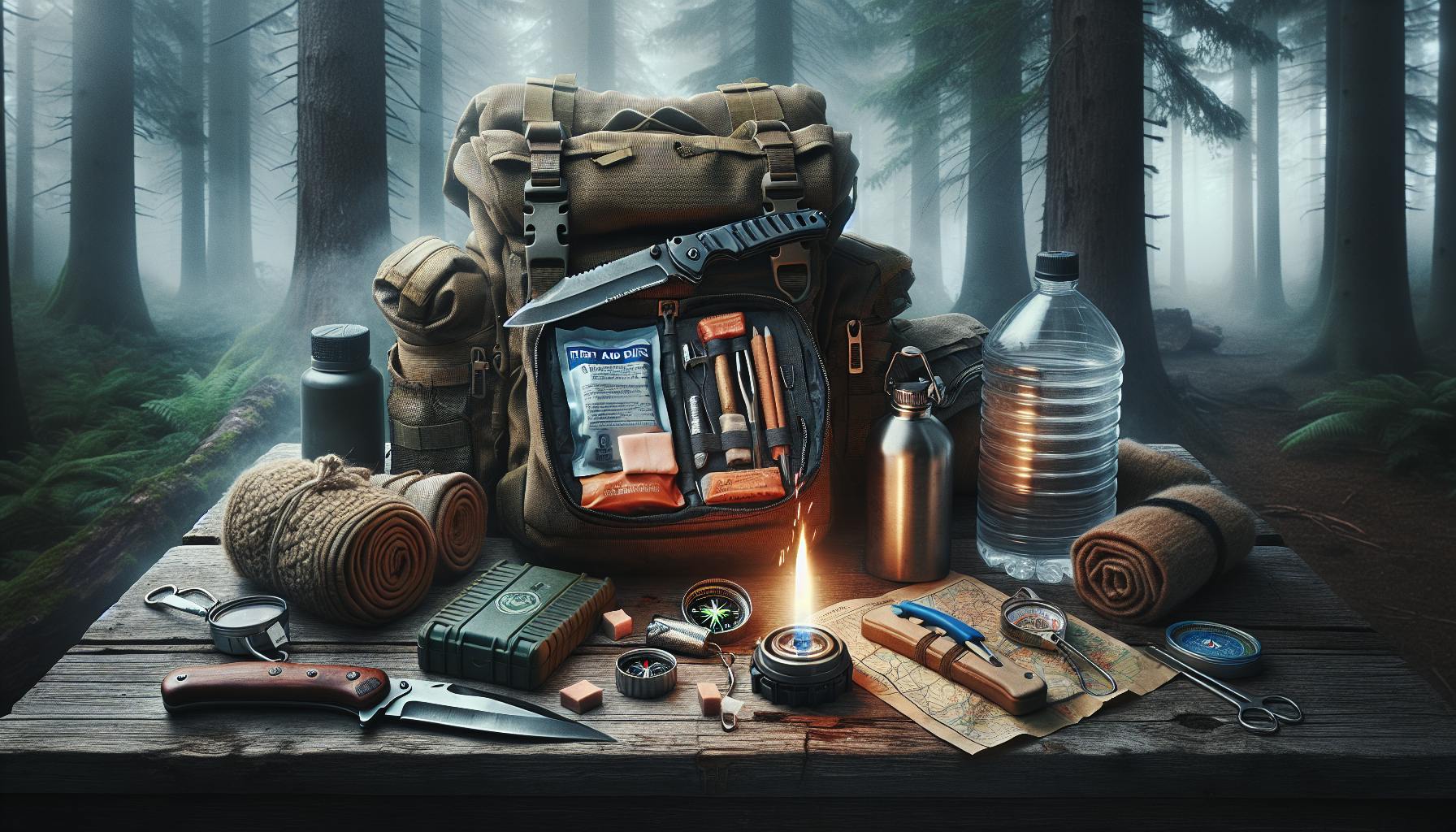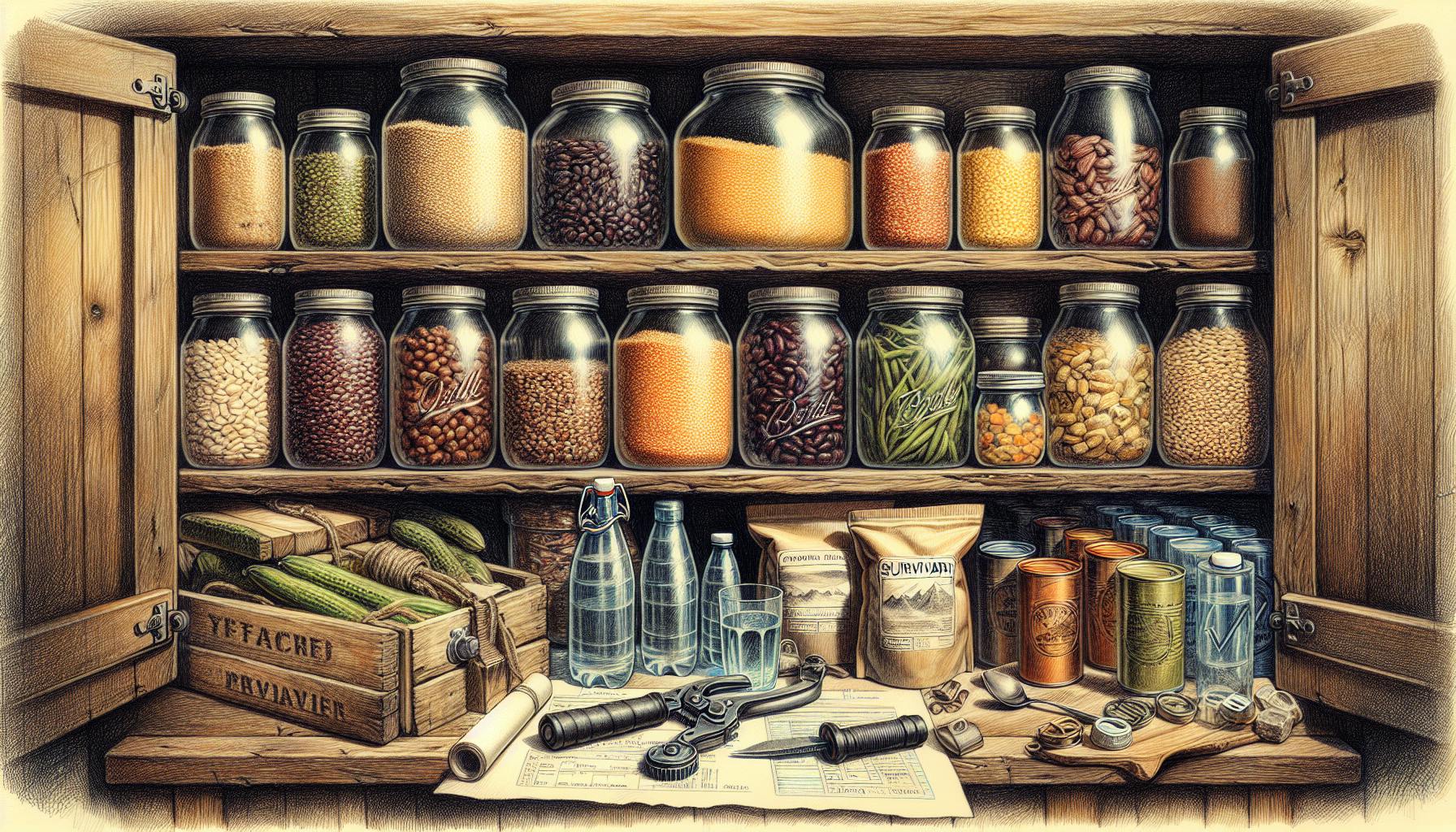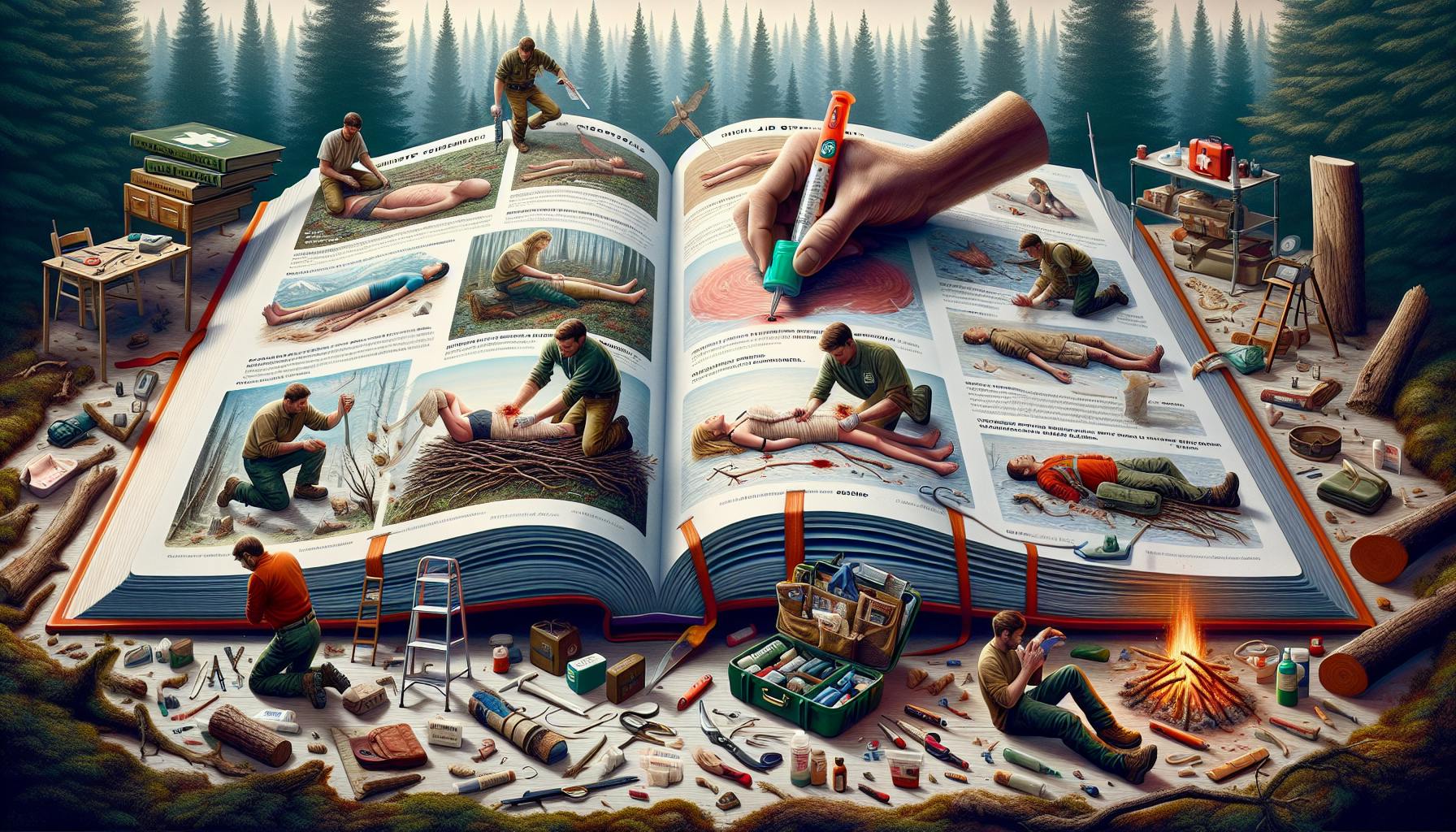Introduction to Prepping
Prepping involves making practical preparations and gathering supplies to be ready in case an emergency or disaster strikes. At its core, prepping is about fostering self-reliance and being prepared for any situation that may arise.
While often associated with "doomsday" scenarios, prepping is simply about taking responsibility for your own safety and ensuring you have the capacity to handle adversity. Whether the emergency is a job loss, power outage, natural disaster, or civil unrest, preppers aim to minimize disruptions to daily life.
For example, having ample food and water provisions allows preppers to shelter in place during severe storms rather than panic-buy supplies. Medical training and first aid kits enable preppers to provide emergency care when hospitals are overwhelmed after disasters.
The prepper mindset is focused on prevention, vigilance, and proactively overcoming vulnerabilities. Preppers take incremental steps to bolster their resilience, gradually building comprehensive capacities over time.
What is Prepping?
Prepping involves stockpiling essential supplies like food, water, tools, and medical gear to handle emergencies without reliance on external aid. It also requires learning useful skills like emergency medicine, defense tactics, hunting, and survival expertise.
Preppers strive for self-sufficiency and readiness for any contingency through proper planning and preparation. Whether the emergency is a hurricane, earthquake, pandemic, or societal collapse, preppers aim to be equipped and adaptable.
Why Prepare?
Being prepared provides peace of mind and confidence to handle whatever situations may arise. Developing self-reliance through prepping allows you to overcome disruptions without depending on overwhelmed response services.
Prepping also enables quick mobilization during disasters to protect yourself and your family. Having robust preparations in place significantly reduces panic and stressful decision-making during catastrophes by ensuring you already have plans and supplies in place to weather the emergency.
Getting Started with Prepping
If you're new to prepping, start by taking inventory of the supplies you already have and making a list of what you'll need. Develop a reasonable budget and timeline for acquiring gear and training.
Beginners should start small with a basic 72-hour emergency kit containing water, non-perishable food, first aid supplies, flashlights, batteries, cash, and copies of important documents. This provides an achievable first goal before expanding your preparations.
As you build knowledge and skills, you can expand your preparations for longer-term crises. Take CPR and first aid classes, read prepper resources, and connect with like-minded people. Let preparedness guide your lifestyle choices large and small.
Integrating the Prepper Mindset
Cultivating the proper mindset is just as important as the physical preparations. Foster vigilance and situational awareness in your daily life by staying abreast of local news and potential threats. Adopt a proactive mentality focused on prevention through fitness, skill-building, and relationship development.
Make preparedness a hobby and lifestyle. Let it guide your decision making and priorities. Maintain your equipment and rehearse your skills regularly through practice drills. Prepping is a long-term endeavor requiring determination to progressively build capacities over time.
Essential Prepping Supplies
Certain categories of gear form the foundation of a well-rounded prepper's supplies. Prioritize emergency provisions for basic survival needs first, then expand your reserves and self-sufficiency capacities.
Water
Having an ample water supply is critically important during disasters when regular service is disrupted. Store at least 1 gallon per person per day for a minimum of two weeks. You'll need water for drinking, food preparation, hygiene, and sanitation. Consider rainwater collection systems and water filtration devices. Also stock spare parts for plumbing and water heaters.
Long-Term Food Storage
Build reserves of non-perishable food staples with long shelf lives like rice, beans, canned meat, honey, salt, and cooking oil. Have enough to cover the entire family for at least 2-4 weeks. Store foods properly and routinely cycle out items before they expire. Obtain offline cooking equipment like camp stoves and fuel sources.
Shelter and Warmth
Be prepared to handle infrastructure disruptions to heating and housing. Have spare warm clothing, blankets, sleeping bags, and tents. Consider alternative heating and cooking sources like wood stoves, kerosene heaters, and Dutch ovens. Maintain tools for emergency repairs. Learn techniques for insulating and weatherproofing your home.
Sanitation and Hygiene
During emergencies that disrupt water service, you'll need backup plans for sanitation and hygiene. Stockpile toilet paper, soap, disinfectants, feminine products, and diapers if needed. Get trash bags, gloves, buckets, and shovels for waste management. Chemical toilets provide an offline sanitation solution.
First Aid Supplies
Medical emergencies don't stop during disasters, so stockpile bandages, gauze, ointments, medications, instruments, etc. Take first aid and EMT courses to learn how to respond to injuries and provide trauma care. Having the right supplies and training allows you to effectively handle health issues on your own.
Essential Knowledge and Skills
In addition to supplies, preppers need knowledge and skills to effectively utilize their equipment and overcome challenges. Take hands-on courses in survival expertise, health sciences, food production, and general self-reliance.
Wilderness Survival Skills
Learn primitive skills like making tools, traps, fishing gear, and debris shelters. Study wild edible plants and basic hunting. Understand animal behavior patterns and navigation methods like orienteering. Obtain experience with essentials like fire craft, rope work, and wilderness medicine.
Self-Defense and Security
Take tactical defense courses focused on situational awareness, deterrence, evasion, and recovering from incidents. Learn hand-to-hand combat, defensive weapons skills, and de-escalation techniques. Develop monitoring systems and secure defensive positions. Study trauma care to handle security incidents.
Emergency Medicine
Take CPR, EMT, and advanced first aid training focusing on trauma, wounds, burns, infections, and improvised treatment methods. Maintain medical reference materials on diagnosing and field-treating various conditions. Practice patient assessment, triage, anesthesia, suturing skills, sanitation measures, and disease prevention.
Self-Sufficiency Skills
Develop DIY skills and traditional homesteading capacities like gardening, animal husbandry, food preservation, tool/equipment repair, and making basic staples like soaps, textiles, etc. Learn hunting, foraging, fishing, trapping, butchering. Study alternate medicine, herbalism, and natural remedies.
Adaptability and Innovation
Cultivate creative problem-solving, flexibility, improvisation, and innovation skills. Be able to rapidly adapt to fluid situations with limited resources. Develop community-building and cooperation capacities to overcome challenges together. Stay open to new ideas and continuously improve.
Integrating Prepping into Daily Life
Don't restrict prepping to an occasional hobby. Make it an intrinsic part of your lifestyle, habits, and decision making. Preparedness is a lifelong endeavor requiring persistent progress over time. Take small but continuous steps to build your capacities week-by-week and year-after-year.
Make It a Lifestyle
Cultivate resilience daily through challenges and hardship. Reinforce vigilance and self-reliance habits at work and home. Let preparedness guide your decision making and priorities from where you live to what skills you learn. Shape your lifestyle to bolster adaptation capacities and harden yourself against adversity.
Prep with Community
Collaborate with neighbors to share knowledge, tools, and resources. Train together and align your emergency preparations. Form local support networks to provide aid and reinforce community resilience during disasters. Stay connected through clubs, meetings, events and social media groups.
Budget and Finance Prepping
Make preparedness part of your monthly budget. Allocate funds from each paycheck for supplies and training. Take advantage of sales, bulk purchases, used items, and DIY options to save money. Form group co-ops to get volume discounts. Identify expenses you can cut back on to direct more funds into prepping.
Maintenance and Organization
Keep thorough inventories of your gear with expiration dates. Routinely cycle through and replace outdated stock. Have labeling systems to track storage locations. Conduct inspections and maintenance to ensure items remain functional. Keep equipment fueled, cleaned, organized and ready for immediate use.
Steady Progress Over Time
Avoid overwhelm by prepping gradually in a series of small, achievable steps that build on each other week-by-week and year-after-year. Stay motivated through milestones like assembling your 72-hour kit, taking your first aid course, or installing rainwater barrels. Prepping is a marathon, not a sprint.
Staying On Top of Prepping Developments
To continue advancing your preparedness, stay engaged with the wider prepper community for news, ideas, and training. Resources are abundantly available through publications, online groups, events, and in-person networks.
Prepper News and Information Sources
Follow prepper newsletters, podcasts, websites, and social media groups to get a steady stream of information, product reviews, and expert insights relevant to your location and needs. Some top sources include The Survivalist Newsletter, The Preparedness Podcast, SurvivalLife.com, and local Facebook Groups.
Books and Reference Manuals
Build your library with canon classics like 'How to Survive the End of the World' and field guides like 'Bushcraft 101'. Obtain medical references like 'Where There Is No Doctor' and 'Herbal Antibiotics'. Expand your knowledge through homesteading books, survival fiction, DIY manuals, and more.
Prepper Training and Education
Take new hands-on training courses annually to expand your skillsets. Attend conferences and workshops to learn techniques first-hand from experts. Participate in local emergency response volunteer groups and disaster exercises to validate your preparations. Stay on top of best practices.
In-Person Prepper Networks
Connect in-person through prepper meetup groups, clubs, conventions, and informal networks. Meet like-minded people through local outdoor recreation stores, shooting ranges, and homesteading suppliers. Arrange to learn skills from neighbors with subject matter expertise.
Continuous Improvement
Re-evaluate your preps, plans, and skills at least annually. Test your equipment and run practice drills. Identify gaps in your preparedness and develop solutions to address them. Adapt as your living situation, needs, and resources change over time. Stay abreast of developing threats and evolving best practices.
Key Takeaways
- Prepping cultivates self-reliance and readiness for adversities through planning, knowledge, and skills.
- Make preparedness a lifestyle focused on prevention, vigilance, and continuous capacity building over time.
- Stock up on essential survival supplies, equipment, and medical references tailored to likely risks in your region.
- Learn critical knowledge and hands-on skills through books, online resources, and in-person training.
- Stay engaged with the wider prepper community for ideas, validation, and motivation to keep advancing your readiness.
In summary, prepping simply means being proactive regarding your safety. Start small if you're a beginner and focus on foundational emergency provisions, knowledge, and skills. Through steady progress over time, you can develop comprehensive capacities for handling disasters and disruptions. Stay adaptable and keep improving through connections, education, and practice.


